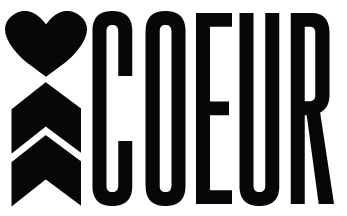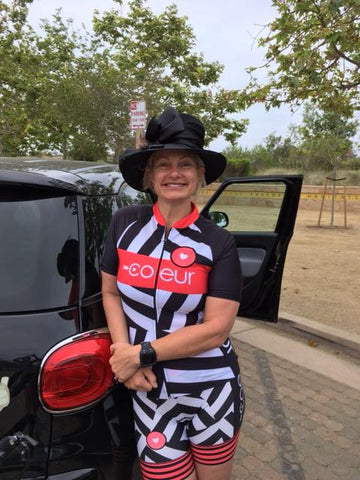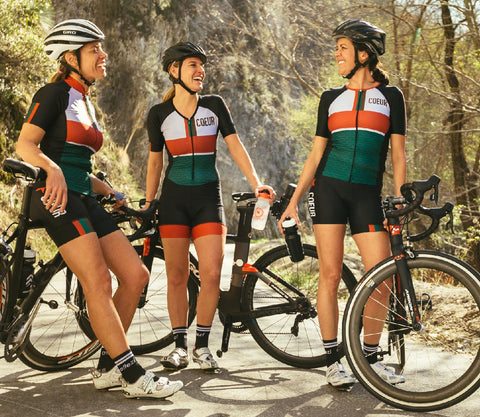Picking the perfect pair of triathlon shorts
Hi and thanks for giving this a read. We’re Coeur Sports (Coeur is French for Heart & the root of the word Courage) and we produce our own line of Women’s Triathlon, Cycling, Run, Swim and Lifestyle apparel. And you…we suspect, may be interested in Women’s Triathlon Shorts and Tops. Or maybe you're just browsing and happened upon our blog. In any event, we're glad you stopped by and we welcome the opportunity to share some information about the construction of our clothing.
Now, we’d expect you to have a degree of skepticism about any article written by any provider of tri gear that claims theirs is the best in the market. That’s why we were somewhat nervous about even drafting this blog. Clearly, we have a bias (as does any company that produces something), but we acknowledge it up front and will do our best to share the unvarnished truth about why we think we really have created a superior product.
You see the company was founded by Kebby Holden who is a three time Ironman Hawaii Qualifier. From the outset, she focused on performance and quality instead of profit margins.
Coeur Founder Kebby Holden
Consequently, we thought it might make sense to share some of the details of our gear and to let you know what we think people should look for when they buy Women’s Triathlon Shorts and Tops.
First, let's talk terminology. When people talk about triathlon gear, they usual focus on the design (i.e. the artwork) and/or the construction (i.e. the fabric, the seams etc.).
Our design team has a lot of fun developing new patterns but only after they have perfected the construction
This post is generally about the construction. That's because design is sooo darn subjective. Now parts of the construction are subjective too, but by and large, there are generally accepted indicators of quality when it comes to construction. That being said, we have to note that there are some fantastic designers out in the market place and that is great for consumers. If the color palate is your main focus, then you have options ranging from super funky and edgy to a bit more elegant. At Coeur, we try to create clean designs that are fun and a bit more on the preppy side. But, as we said, taste is personal and if you look hard enough, we're sure you'll find a design that is perfect for you. Even if you don't, you shouldn't worry because there are companies out there that produce blank, stock garments and they will let you come up with your own design and put it on their standard gear.
Now, in those cases, you don't have as much flexibility when it comes to the actual construction of the garment as opposed to the design. That's because changing the construction of the clothing is much more complicated than changing the design. A significant part of the cost of tri gear is related to the construction and we think that's where things can get confusing. And that leads us to one of our key points related to quality which is that "a high price does not always mean high quality." This is a big deal and very important. We can’t say this enough, since an educated buyer is our best friend. If you don’t know why a Triathlon Top is $95 plus shipping, take a moment to find out. It may be that your provider doesn't actually create the pattern for the garment. Instead, they may be working with one the companies that allows people to put their designs on stock gear. As we said before, that is perfectly fine, but it does generally add an extra mark up to the price and it could mean that you're not really getting a women's specific garment. If you have any questions, we'd suggest that you just ask before buying. If the company is vague about their manufacturing, then you might need to be suspicious about the quality.
Ok, now let’s talk about the triathlon shorts. To many, the shorts are the single most important piece of clothing. That's because they are not only the most complicated, but because they protect a critical area of your body. Here's our overview of triathlon shorts.
To start off with, there’s the fabric. The fabric should be breathable, stretchy, durable and soft (to avoid chafing). If it's not soft enough to wear when you first buy it, you should be concerned. Chances are it won't improve that much after washing. Now there will be some improvement in the feel (or "hand" as it's called) of the fabric after it's washed but don't count on huge improvements.
Lycra is the go to material and most manufacturers have figured this out. Now if you're wondering why we didn't mention Spandex, it's because Lycra and Spandex are the same thing. Spandex is just a brand name. Lycra is an amazing fabric that stretches, provides some compression and is very durable. It does, however, need to be blended with another material to make sure the finished product is breathable. Another great thing about Lycra is that it is perfect for what is called sublimation printing. This is a type of printing that fuses the ink with the actual molecules of the fabric, so that they resist fading.
Second, let’s talk about the pad or the chamois as it is known. The pad is critical since it protects a very important region of your body. Namely, the, uhhmm...the..well, the southern hemisphere. With triathlon shorts, you need a very small pad since you'll be swimming, biking, and running in the same garment. We suggest that you avoid using bike shorts in a triathlon since they'll feel like a diaper on the run. You could race in your bathing suit but most people prefer to have some protection and they go with triathlon shorts that have the small pad. To the extent you can, make doubly sure the pad doesn't contain seams that hit areas of your body that rub together. That will cause chafing and that is bad news. We hate to sound like we’re bragging but we do think the way we’ve extended the chamois to remove the seams is pretty amazing. We’ve gotten rave reviews from our customers and we’re pretty sure you’ll love it.
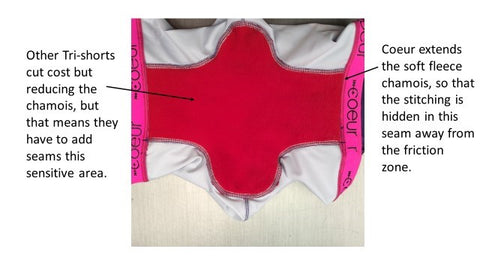
Keep the Kitty Happy by making sure your Chamois doesn't Chafe
One of the main reasons more companies don't do this is because it is an expensive process. The sewing is more complex and you have to buy more material for the pad. Instead, most companies put a seam in that, unfortunately, goes right down the two sides of the center. Ouch.
Ok, now let’s talk about the seams. Since seams that are bulky or placed incorrectly are one of the biggest causes of chafing, you should make sure they don't hit sensitive areas. In addition, the seams themselves should be as smooth as possible. The preferred stitch is called a Flatlock. It eliminates chafing by removing any fabric that overlaps. Instead, the two pieces of fabric are butted up against each other. The sewing machine required to produce a flatlock stitch is expensive, so some manufacturers cheat a little by going with something called an Overlock Stitch that can be made to look like a Flatlock. It saves them money but it may cause you issues. We'd encourage you to just ask if they use Flatlock stitches.
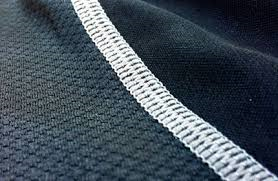
A true Flatlock Stitch is more expensive but higher quality
Finally, let’s talk about the waist band. More and more women are coming to the conclusion that a yoga-style waistband is the way to go. There are two reasons for this. First, it isn't quite as constricting as a small, thin waistband and second, it helps eliminate the dreaded muffin top.

So, there's our overview on women's triathlon shorts. It's a surprisingly complex piece of clothing and it can tend to be a big expensive. Because of that, we think it is important that you know what to look for when you go shopping.
Thanks,
Your friends at Coeur
